 |
 |
||||||||||||||||||
 |
|||||||||||||||||||
  |
|
  |
|||||||||||||||||
 |
 |
||||||||||||||||||
 |
|||||||||||||||||||
  |
|
  |
|||||||||||||||||

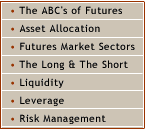
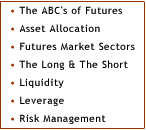
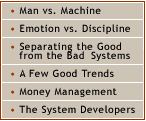
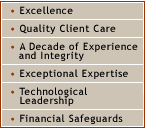
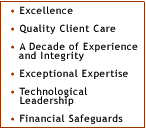
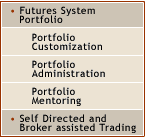
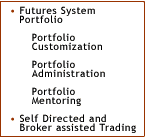




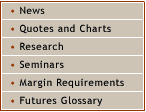
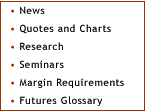





| What is Early Bird III? | ||
| Who developed Early Bird III? | ||
| What trade markets can be traded with Early Bird III? | ||
| What makes Early Bird III different from other trading systems? | ||
| Does Early Bird III fit into your portfolio? | ||
| System Performance | ||
| How much does it cost to buy Early Bird III? | ||
| What do you get when you buy Early Bird III? | ||
| How can Trade Center, Inc. help? |
| What is Early Bird III? | ||
| Who developed Early Bird III? | ||
| What trade markets can be traded with Early Bird III? | ||
| What makes Early Bird III different from other trading systems? | ||
| Does Early Bird III fit into your portfolio? | ||
| System Performance | ||
| How much does it cost to buy Early Bird III? | ||
| What do you get when you buy Early Bird III? | ||
| How can Trade Center, Inc. help? |
| What is Early Bird III? | ||
| Who developed Early Bird III? | ||
| What trade markets can be traded with Early Bird III? | ||
| What makes Early Bird III different from other trading systems? | ||
| Does Early Bird III fit into your portfolio? | ||
| System Performance | ||
| How much does it cost to buy Early Bird III? | ||
| What do you get when you buy Early Bird III? | ||
| How can Trade Center, Inc. help? |
|
EarlyBird III is a completely mechanical day trading system that trades the S&P; full-size and e-mini contracts. It is built on the foundation of the original EarlyBird system, which was first released in April, 1999. (Since January, 2001, EarlyBird I has been tracked by Futures Truth, which recommends it as one of the Top Ten S&P; day trading systems.) The system may be purchased or leased.
Benefits: • Consistent returns • Low drawdowns • Careful selection of tradable days • High percentage of winners • High average profit per trade |
|
Lincoln Fiske, founder and owner of TradingVisions Index Systems, Inc., has had a lifelong interest in markets and investing. Beginning in the late 1980�s he became involved in the futures markets as a trader/investor, and a few years later developed his first mechanical systems. Lincoln has also been a public school teacher for the last 20 years. For further information, visit the site at www.TradingVisions.com or call 509-466-8435. |
| One mark of a robust, stable system is that it can successfully traded on a variety of markets. Although developed primarily for the S&P; 500 futures index, EarlyBird III also performs very well on the Dow Jones, S&P Mid-cap and Russell 2000 futures contracts (full-size and e-mini). |
|
Based on the observation that only a small percentage of days can be effectively traded, EarlyBird III takes a conservative approach to the market. The system looks for a particular type of volatility and uses a unique, specific measure of market strength and directionality that is very predictive of days that have strong moves. Rather than indicators, time and price measures determine these tradable days. By being selective, EarlyBird reduces risk 1.) by trading only about once per week on average (about 2% of the total market time), therefore not incurring the risk of frequently being in the market, and 2.) by participating on days when volume propels price, lending liquidity for better fills and strong price movement for healthy profits per trade. Because of this selectivity, there are periods when the systems do not trade at all and other periods where they trade frequently. It is this ability in adjusting to market conditions that has helped EarlyBird succeed. Another unique quality of EarlyBird III is that it is composed of five separate subsystems that are integrated around the strategy of choosing trade days that are most likely to produce profits. Each sub-system was created to capture a unique market pattern: trend, countertrend, retracement and return to a trend, failure of a trend, and failure of a countertrend. Because it trades a number of patterns, EarlyBird has the extra stability gained from trading a �portfolio� of systems: when one sub-system is in a drawdown, there is a likelihood that one or more of the others will compensate. All entries and exits are stops or limit orders. Each of the five subsystems has its own set of entries and exits, although some are similar to or the same as others, depending on the particular market pattern upon which the entry is based. In most cases stops move to break-even or lock-profit after the trade advances favorably; profit objective limit orders are also used in four of the five subsystems. |
| Investors today understand the importance of trading a varied portfolio of systems and markets in order to stabilize their equity curves. EarlyBird III has been extensively tested in combination with other developers� systems�both short-term S&P; systems and long-term, multi-market approaches--and in every case it improves their hypothetical performance. (You may view the results of this testing on the Portfolio Studies page of the TradingVisions site.) Adding EarlyBird to a hypothetical portfolio increases profit, reduces depth and duration of drawdowns and smoothes the equity curve. One of the most common failures of futures investors is chasing the �hot� system, only to find that once trading begins, the system has run out of steam. By trading a portfolio of systems, the investor increases the likelihood of balancing the cycles of hot and cold. Portfolios also allow for a more efficient use of capital because maximum drawdowns of the combined equity curves are less than the total of the individual system drawdowns. This allows the investor to trade the combined systems for less capital than the individual systems. |
|
For updates every quarter, you are invited to get a free copy SystemTrac, a comprehensive report on Early Bird III, as well as other publicly available futures trading systems. On a hypothetical basis, you will be able to view the performance, draw down, and related statistics, side by side. To download a free SystemTrac click here Call Trade Center, Inc. direct for a free report at 800.894.8194 or 949.643.7100 Updated real-time performance as well as historical hypothetical performance is posted on the site at www.TradingVisions.com. Additionally, all the TradingVisions systems are tracked by Futures Truth (www.FuturesTruth.com), an independent company which verifies system results and offers opinion letters on various systems. EarlyBird I, because it has been tracked longer, has been in several top ten tables since September, 2002. Lastly, you may check the SystemTrac record. A system is best judged on the basis of its �real-time� or out-of-sample results, i.e. results that come from outside the study period upon which the system was originally tested and built. In the more than four years of out-of-sample results since the release of original EarlyBird, which contained only the Trend and Counter Trend subsystems, the system has averaged on the S&P; close to $1600/month after $200 slippage/commission. EarlyBird III, half of whose trades are the same entries as original EarlyBird, hypothetically averages over $3600/month on a maximum drawdown of $9700 and over 60% winners in its hypothetical, in-sample period. Over the period 9/96-present, EarlyBird III has hypothetically earned (after $200 slippage/commission) over $280,000 on a maximum drawdown of $9700. The average drawdown is less than $3400 over an average period of 21 days. |
| EarlyBird III may be leased and traded through system-assist brokerages at a cost of $85/month for 2 e-mini S&P;�s or $250/month for 2 full-size S&P;�s. It may be purchased fully disclosed for $1975. A unique feature of the TradingVisions lease program is that systems and contracts may be mixed. This allows, for example, the trading of 1 mini of each of the 4 TradingVisions systems for $170/month. |
|
With each Early Bird III purchase, you will receive the following: You�ll receive a manual fully disclosing the logic of all three versions of EarlyBird. You will also receive the open-source TradeStation code compatible with TS4-TS7.1. Also included are locked files and brief system rules for use by a broker, should you wish to trade the system through a system-assist program. The developer will assist a broker of your choice in setting up. Continuing support is provided. |
|
Guidance. The staff at Trade Center, Inc. is experienced, qualified, and trained to provide you with the services necessary to navigate through the trading system waters. First, we determine what your objectives are. We work with you to determine what risk levels you are comfortable with, and what are your objectives. Service A Turn Key Solution. Once your plan has been established and the system purchased from the developer, simply open and fund your account with Trade Center, Inc. Your broker will execute the trading system exactly according to the specifications, just as if you were doing it from your computer. You can monitor the progress of both the system and your account on a live basis via the Internet. Thus, you have a team of professionals working for you, executing your investment plans, 24 hours a day. |